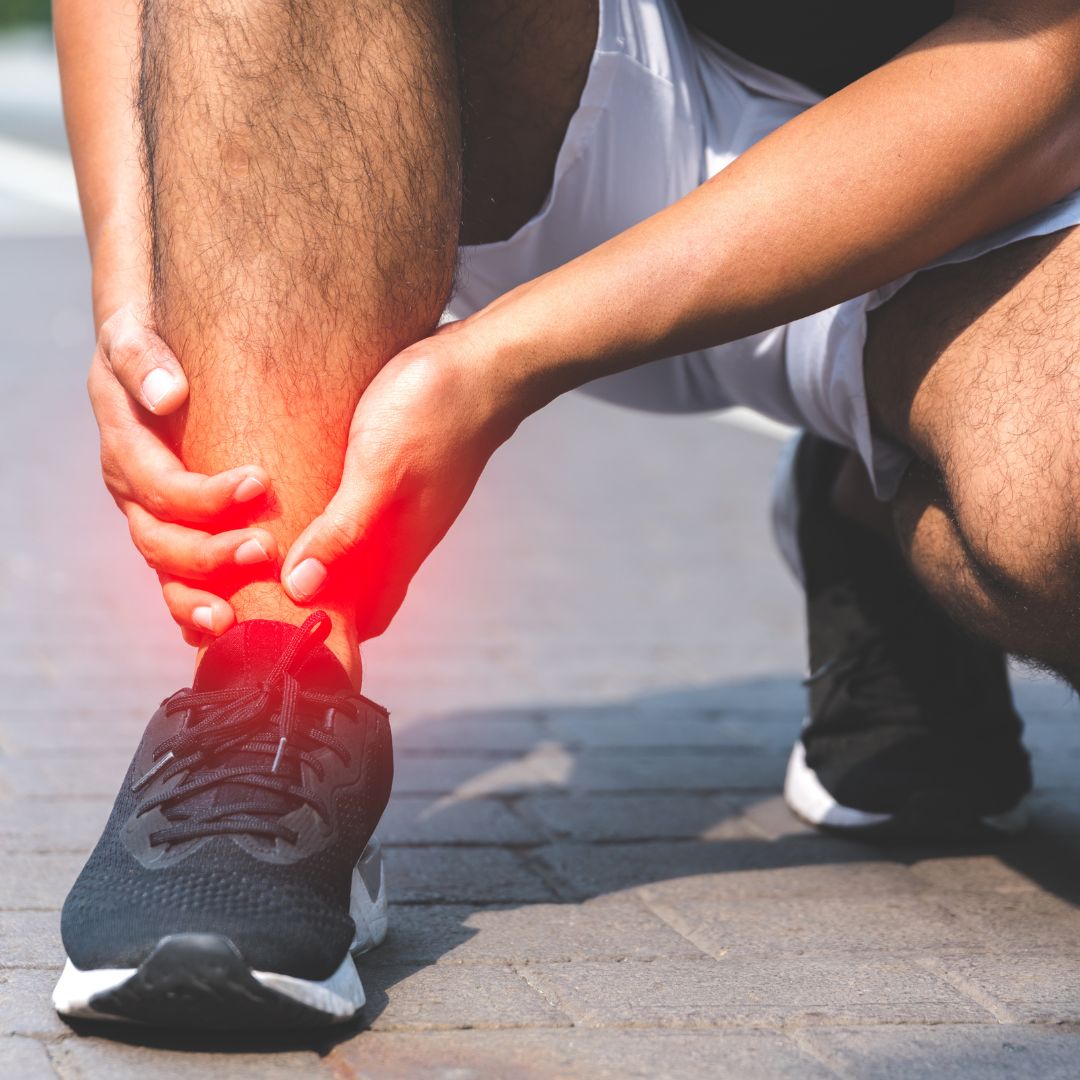Ankle swelling or pain?:common ankle injuries and treatment
The main movement the ankle makes is to allow the foot to pull up or push down (dorsiflexion and plantarflexion). This is the primary movement used in walking and running. But because the ankle is vital for balance as well, it can also move in two other planes.
In one plane, movements include adduction (think pigeon-toed) and abduction (think Charlie Chaplin). And in the other plane there is inversion (imagine rolling the feet so the soles face each other) and eversion (rolling the feet in the opposite direction).
Runners can be susceptible to ankle injuries when their feet either overpronate (a mix of eversion and abduction) or over-supinate (inversion and adduction). Either way, it’s what we often simply call a “twisted” ankle.
Anatomy of the ankle
The ankle joint is made up of the tibia (shin bone), fibula (the smaller bone that runs alongside the tibia) and the talus (the foot bone that sits above the heel bone).
The joint is surrounded by numerous ligaments. These are tough moveable tissues that join bone-to-bone, and help keep the ankle stable.
When ankle mechanics go wrong, it’s often because the bones become misaligned, causing restrictions which lead to problems particularly when landing each step. Unstable ankles can also cause hip issues through overcompensation.
Ankle Strain
Symptoms: Pain and often swelling around the ankle. Restricted flexibility and difficulty moving the ankle through its full range of motion. Occasionally, the muscle will spasm. Can be chronic or acute.
Cause: Too much time running on hard or uneven ground (chronic), or sudden jolting or twisting of the ankle when losing your footing (acute). This leads to overstretching or tearing of muscles or tendons in the ankle.
Prevention: First, warm up properly and stretch before you run, especially your calves. Also, stretch properly during your cool down, on every run! Run regularly and comfortably rather than infrequently and intensively, to help muscles, tendons and ligaments adapt to increased loads. Ask us or your physio for stretches and exercises to help strengthen the surrounding muscles. Be mindful of weather conditions. Ice and snow can be treacherous for the ankles, and you should perhaps use a treadmill in these conditions rather than risk acute injury. And, of course, invest in good quality running shoes.
Treatment: First of all, stop running! For an acute strain, use the “R.I.C.E. method” (rest, ice, compression and elevation), and if you are still in severe pain after 24 hours you should see a physiotherapist. They may immobilise the joint, advise you to ask a pharmacist about anti-inflammatories, or suggest you see a doctor for further examination (eg. perhaps an X-ray to rule out a fracture). They will also give you strengthening exercises to help in your recovery.
Ankle Sprains
Symptoms: Symptoms are very similar to a strain, except the muscles are less likely to spasm, and there may be bruising.
Cause: The events causing ankle sprains are similar to those causing strains. However, in this case it is the ligaments in the ankle that get overstretched or torn.
Prevention: Whereas it is difficult to strengthen the ligaments themselves, maintaining strong muscles and tendons in the surrounding areas will reduce the chances and impact of an unfortunate twist. Balancing exercises are particularly helpful. If you know you have weak ankles, you should wear an elasticated strap (available in most pharmacies) during all training sessions.
Treatment: Again, stop running, carry out R.I.C.E, and see your physio, osteo or sport therapist for advice and strengthening exercises. Generally speaking, ankle sprains will require a longer period of rest than strains. In both cases, you need to be sure you can raise on to tiptoes pain-free, and feel confident that you have a full range of motion in the joint, before you begin running again.
If you have any doubt, our osteopaths, physio and sports therapist will be able to advise.
We hope this information is useful for you. If you need advice or have any questions about our treatments, please contact us. You can find us in Mill Hill Broadway and Islington. We are always happy to help. If you like this blog, please share!



